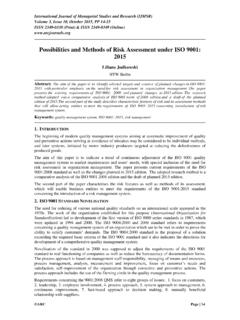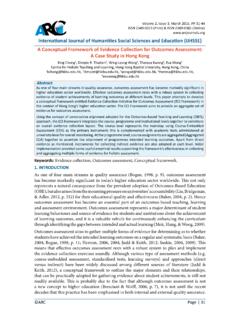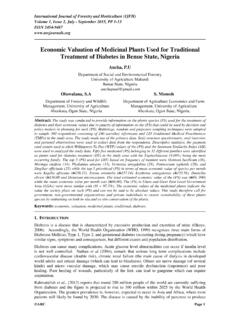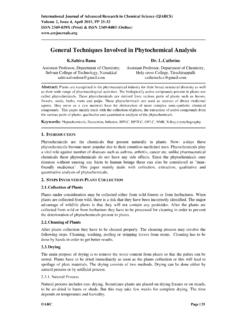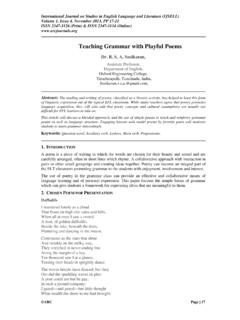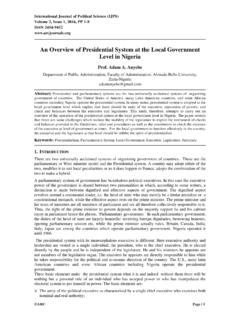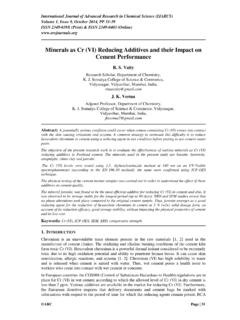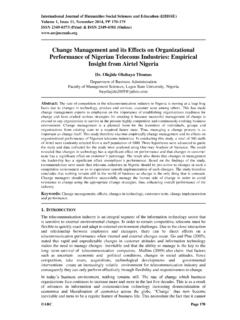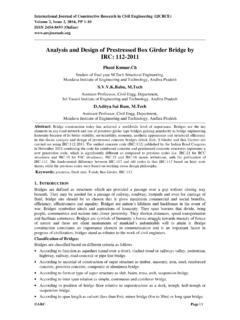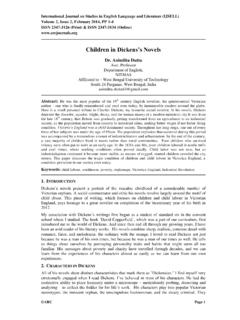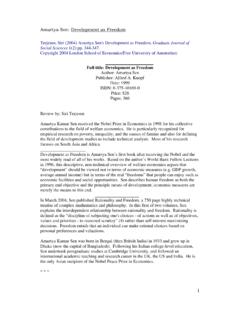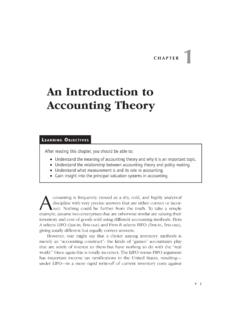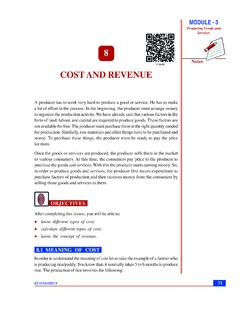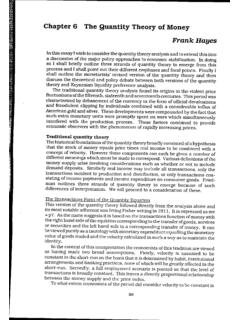Transcription of The Impact of Financial Analysis in Maximizing the Firm’s ...
1 International Journal of Managerial Studies and Research (IJMSR) Volume 2, Issue 6, July 2014, PP 1-9 ISSN 2349-0330 (Print) & ISSN 2349-0349 (Online) ARC Page 1 The Impact of Financial Analysis in Maximizing the Firm s Value "A Case Study on the Jordanian Industrial Companies" Dr. Nabil M. Al-Nasser Assistant Professor Accounting Department Al-Zaytoonah University of Jordan, Amman, Jordan Abstract: Financial statement Analysis involves a study of the relationships between income statement and Financial position statement accounts, how these relationships change over time, and how a particular firm compares with other firms in the same industry.
2 This study aims to point out the Impact of Financial Analysis in Maximizing the firm's value. Financial Analysis outcomes can be used to help both managers and external parties in making Financial and investment decisions to maximize the wealth and benefits of each stakeholder. For achieving this purpose, number of 100 questionnaires has been designed, circulated by hand to a selected sample of employees working in different Jordanian industrial companies. Resolution data were analyzed using the statistical program SSPS. Finally, the study concluded that, Financial Analysis has a significant positive effect on helping managers in taking effective decisions that can increase the profitability and the value of the firm.
3 Keywords: Financial Analysis , Firm's Value, Investment Decisions, Financial Position statement. 1. INTRODUCTION Financial Analysis identifies a firm s relative strengths and weaknesses and suggests actions the firm might enact to take advantage of its strengths and correct its weaknesses in the future. Financial statement Analysis (Pandey, 1995) is not only important for the firm s managers, it is also important for the firm s investors and creditors. Internally, Financial managers use the information provided by Financial Analysis to help making Financial and investment decisions to maximize the firm s value. Externally, stockholders and creditors use Financial statement Analysis to evaluate the attractiveness of the firm as an investment by examining its ability to meet its current and expected future Financial obligations.
4 Financial statement Analysis (Khan, Jain, 1993) involves a study of the relationships between income statement and balance sheet accounts, how these relationships change over time (Trend Analysis ), and how a particular firm compares with other firms in industry ( Comparative Ratio Analysis ). Although Financial Analysis has limitations, when used with care and judgment, it can provide some very useful insights into the operations of a company. Financial statement Analysis is used to obtain a quick indication of a firm's Financial performance in several key areas. The data, which are provided by Financial statements, are readily available. The computation of ratios facilitates the comparison of firms which differ in size.
5 ratios can be used to compare a firm's Financial performance with industry averages. In addition, ratios can be used in a form of trend Analysis to identify areas where performance has improved or deteriorated over time. A Financial Analysis assists in identifying the major strengths and weaknesses of a business enterprise. It indicates whether a firm has enough cash to meet obligations; a reasonable accounts receivable collection period; an efficient inventory management policy; sufficient plant, property, and equipment; and an adequate capital structure (Moyer, McGuigan, Kretlow, 2005). 2. STUDY PROBLEM Right decisions definitely will lead to increasing the firm's earnings , but right decisions depend on useful and proper information.
6 Financial ratios derived through Financial Analysis can provide Dr. Nabil M. Al-Nasser International Journal of Managerial Studies and Research (IJMSR) Page | 2 such useful and proper Financial information which helps managers to take such right decisions. Recently, most of business failures are due to improper information. Financial ratios are statistical yardstick that relate to numbers which is generally taken from the firm s income statement and Financial position statement. These ratios are used by managers as a main judgment tool of Financial performance of a firm. So can managers depend on the ratios outcomes in judging the real performance of their company?
7 And can ratio Analysis reveal the weaknesses points in order to direct management attention to the problems and finally taking right decisions that could maximize the firm's wealth and value. 3. STUDY IMPORTANCE Ratio Analysis is an important technique of Financial statement Analysis . ratios are useful for understanding the Financial position of the company. Investors, management, bankers and creditors use the ratio to analyze and judging the company's efficiency, locating weakness of the company's operations even though its overall performance may be quite good. Although Financial ratios are used to analyze the company's past Financial performance, they can also be used to establish future trends of its Financial performance.
8 As a result, investors can predict the company's performance over the coming years and then facilitates comparison to make the suitable investment decisions. 4. STUDY OBJECTIVES The main objective of the study is to evaluate of ratio Analysis in investment decision making by applying ratio Analysis to determine the strengths and weaknesses of the firm. In assessing the significance of various Financial data for effective investment decision, experts engage in Financial Analysis , the process of determining and evaluating Financial ratios . 5. LITERATURE REVIEW Ratio Analysis is one of the basic tools of Financial Analysis . It is an important tool in business planning and decision making as it explores the strengths, weaknesses, opportunities and threats facing the company ( Online, 2014).
9 Generally managers use Financial ratios to analyze a company's Financial performance before making a decision. Financial ratios reveal how a company is financed, how it uses its resources, its ability to pay its debts and its ability to generate profit. ratios provide a glimpse of a company's position at a particular time, and are most useful when compared across time periods and when comparing companies in the same industry. ratios alone do not give a complete picture of a company's investment potential, but they are a wise place to start the Analysis (Young, 2014). Nowadays, the Financial Analysis of an enterprise is one of the main prerequisites for successful management of Financial resources, and, according to several scientists, is one of the most significant elements of Financial management.
10 A problem with using ratios as tools is that the extant literature testing their value is limited. For example, there is little evidence that a capital accumulation ratio of is better than one of , or that the protection provided by holding 6 months of assets in liquid investments is worth the tradeoff in expected return (Harness, Chatterjee, Finke, 2008). Financial ratios allow for comparisons and, therefore, are intertwined with the process of benchmarking, comparing one's business to that of others or of the same company at a different point in time. In many cases, benchmarking involves comparisons of one company to the best companies in a comparable peer group or the average in that peer group or industry.
